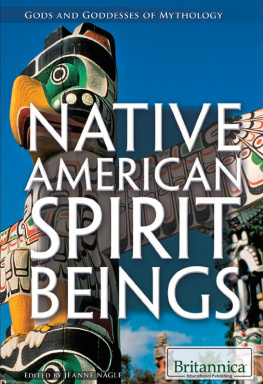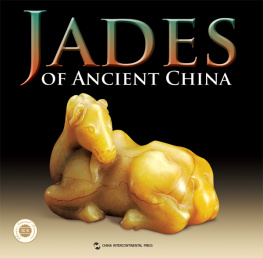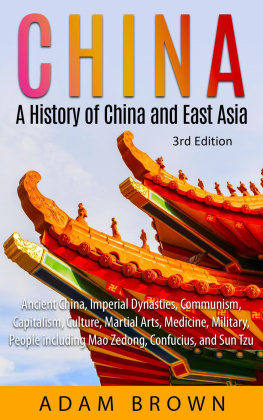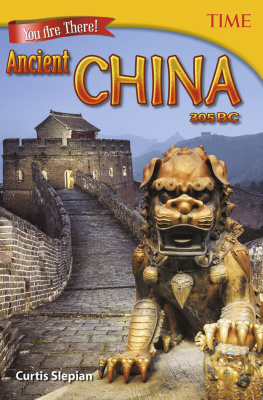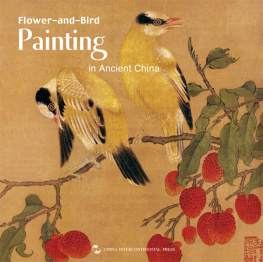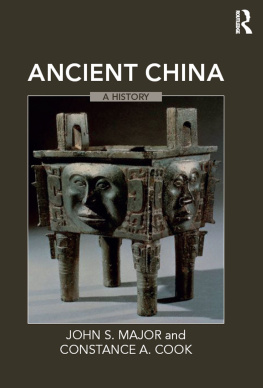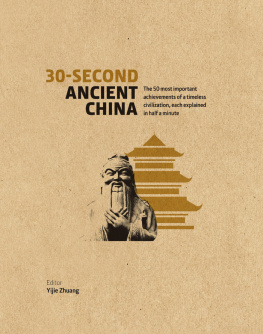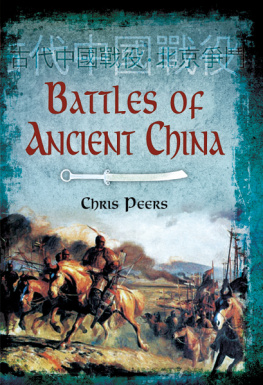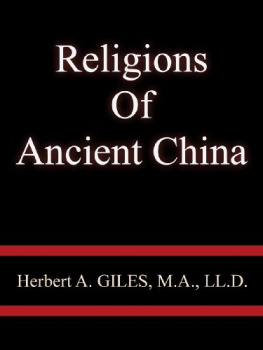

Published in 2015 by Britannica Educational Publishing (a trademark of Encyclopdia Britannica, Inc.) in association with The Rosen Publishing Group, Inc.
29 East 21st Street, New York, NY 10010
Copyright 2015 The Rosen Publishing Group, Inc., and Encyclopdia Britannica, Inc. Encyclopdia Britannica, Britannica, and the Thistle logo are registered trademarks of Encyclopdia Britannica, Inc. All rights reserved.
Distributed exclusively by Rosen Publishing.
To see additional Britannica Educational Publishing titles, go to rosenpublishing.com.
First Edition
Britannica Educational Publishing
J. E. Luebering: Director, Core Reference Group
Anthony L. Green: Editor, Comptons by Britannica
Rosen Publishing
Hope Lourie Killcoyne: Executive Editor
Jacob R. Steinberg: Editor
Nelson S: Art Director
Nicole Russo: Designer
Cindy Reiman: Photography Manager
Karen Huang: Photo Researcher
Library of Congress Cataloging-in-Publication Data
Nagle, Jeanne.
Discovering ancient China/Jeanne Nagle.First edition.
pages cm.(Exploring ancient civilizations)
Includes bibliographical references and index.
ISBN 978-1-6227-5818-0 (eBook)
1. ChinaHistoryTo 1766 B.C.Juvenile literature. 2. ChinaHistory1766 B.C.-220 A.D.Juvenile literature. 3. ChinaCivilizationJuvenile literature. I. Title.
DS741.5.N34 2015
931dc23
2014027330
Photo credits:
Cover, pp. 1, 3 feiyuezhangjie/Shutterstock.com; p. 7 Adapted from A. Herrmann, An Historical Atlas of China (1966); Aldine Publishing Company; p. 9 TAO Images Limited/Getty Images; pp. 10, 41 Heritage Images/Hulton Archive/Getty Images; p. 12 Keren Su/China Span/Getty Images; p. 14 Musee Guimet,t, Paris, France/De Agostini Picture Library/Bridgeman Images; p. 16 Universal Images Group/Getty Images; pp. 19, 27, 37 Courtesy Minneapolis Institute of Arts; p. 20 from San-tsai-tu-hui by Wang Chi; p. 23 Stuart Dee/Photographers Choice/Getty Images; p. 24 DEA/G. Dagli Orti/De Agostini Picture Library/Getty Images; p. 25 Hulton Archive/Getty Images; p. 29 O. Louis Mazzatenta/National Geographic Image Collection/Getty Images; p. 30 Luis Castaneda Inc./The Image Bank/Getty Images; p. 33 Sovfoto/Universal Images Group/Getty Images; p. 34 lzf/Shutterstock.com; p. 36 British Library, London, UK/Bridgeman Images; p. 39 TopFoto/The Image Works; p. 40 RMN-Grand Palais/Art Resource, NY; cover and interior graphics kornilov007/Shutterstock.com (patterned banners and borders), HorenkO/Shutterstock.com and Freckles/Shutterstock.com (background textures).
CONTENTS
H uman ancestors lived in what is now China at least four hundred thousand years ago. Archaeologists have dug up tools and other objects in the Beijing area that were used by people in the Stone Age. Other proof of prehistoric civilizations has been found throughout China. The bones of human ancestors and early modern humans have been discovered, along with the remains of artifactsthe items they made. These pieces include tools carved from stone and animal bones. Evidence suggests that early people in China knew how to make and use fire.
Modern excavations give us a look into prehistoric Chinaa great civilization whose mysteries have been revealed through artifacts and other archaeological finds. In addition, most of the period known as ancient China (roughly 2000 BCE to 221 CE ) is documented in written records. Artifacts reveal to us when the people of ancient China started to live in settled groupsat first mainly near the Huang He, or Yellow River. Eventually those settled groups formed communities. Dynasties (or royal families) began to rule over these communities.
The story of ancient China is defined by the history, emperors, culture, and traditions of its various dynasties. By relating the details behind Chinas early dynastic empires, this book opens a portal to one of antiquitys most important civilizations.

The principal settlements of ancient China were located along the countrys major rivers, the Yangtze and the Huang He.
T he first dynasty in ancient China was the Xia. However, the Xia kings, who reportedly ruled from about 2070 to 1600 BCE , are mentioned only in legends. They may not have actually existed. According to legend, the founder of the Xia dynasty was Yu the Great. Yu was credited with draining the waters of a great flood and introducing irrigation to ancient China. His contributions made him a lord of the harvest. Tradition gives the names of the dynastys successive rulers, ending with Jie. Jie is said to have fallen in love with a beautiful but evil woman who acted cruelly. The story says that the outraged people rose up in rebellion. Tradition tells that the leader of this rebellion, Zi L, became the first ruler of the next great dynasty: the Shang.
The Shang Dynasty
Until the 1920s, many experts believed that the Shang dynasty might also be a legend, like the Xia. However, archaeologists discovered many artifacts that helped prove the dynastys existence. These artifacts include bones and shells carved with Chinese characters. Thanks to these interesting finds, the Shang dynasty is the first recorded Chinese dynasty for which there is both written and archaeological evidence. The Shang created one of the earliest advanced civilizations in East Asia. Culturally the dynasty is most noted for its bronze tools and written documents.

This sculpture in Chongqing, China, shows Yu the Great (center) ridding the land of floodwaters.

Ancient Chinese characters cover the base of a tortoise shell believed to date back to the Shang dynasty.
ARCHAEOLOGY AND ANCIENT WORLDS
Apart from written records and carved inscriptions, knowledge about ancient peoples is derived from the work of archaeologists. Most of the significant archaeological findings have been made in the past two hundred years. Some of the most important archaeological digs in China were made after the late 1970s.
Weapons, pottery, and muscial instruments are some of the more common archaeological finds, but other surprising discoveries have been made. In 2002 a set of four-thousand-year-old noodles were unearthed at Lajia, an archaeological site in the Qinghai Province of northwestern China. The noodlesmade from a type of grain called milletwere the oldest noodles ever discovered!
Location and Type of Rule
Historians think that the Shang kings ruled from about 1600 to 1046 BCE . The Shang state did not cover the entire territory that now makes up China. It was centered in the North China Plain and extended as far north as modern Shandong and Hebei Provinces and westward through present Henan Province.
During the time of the Shang, the land was governed by a number of tribes or clans that were overseen by a king from one of the dominant, or most powerful, clans. The king was believed to have direct contact with the spirit world, from which he received his power. Historians estimate that approximately thirty kings ruled during the Shang dynasty.


